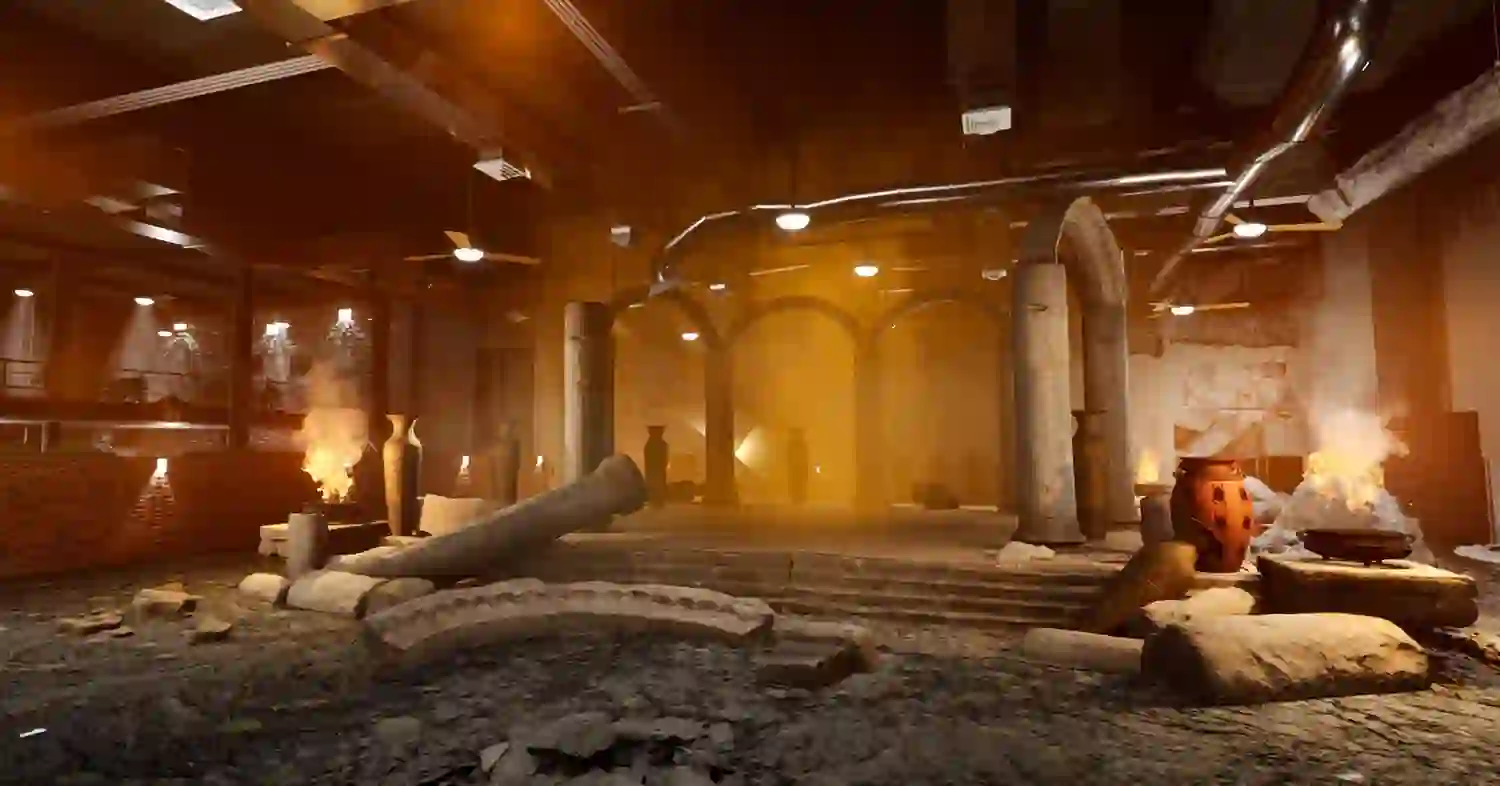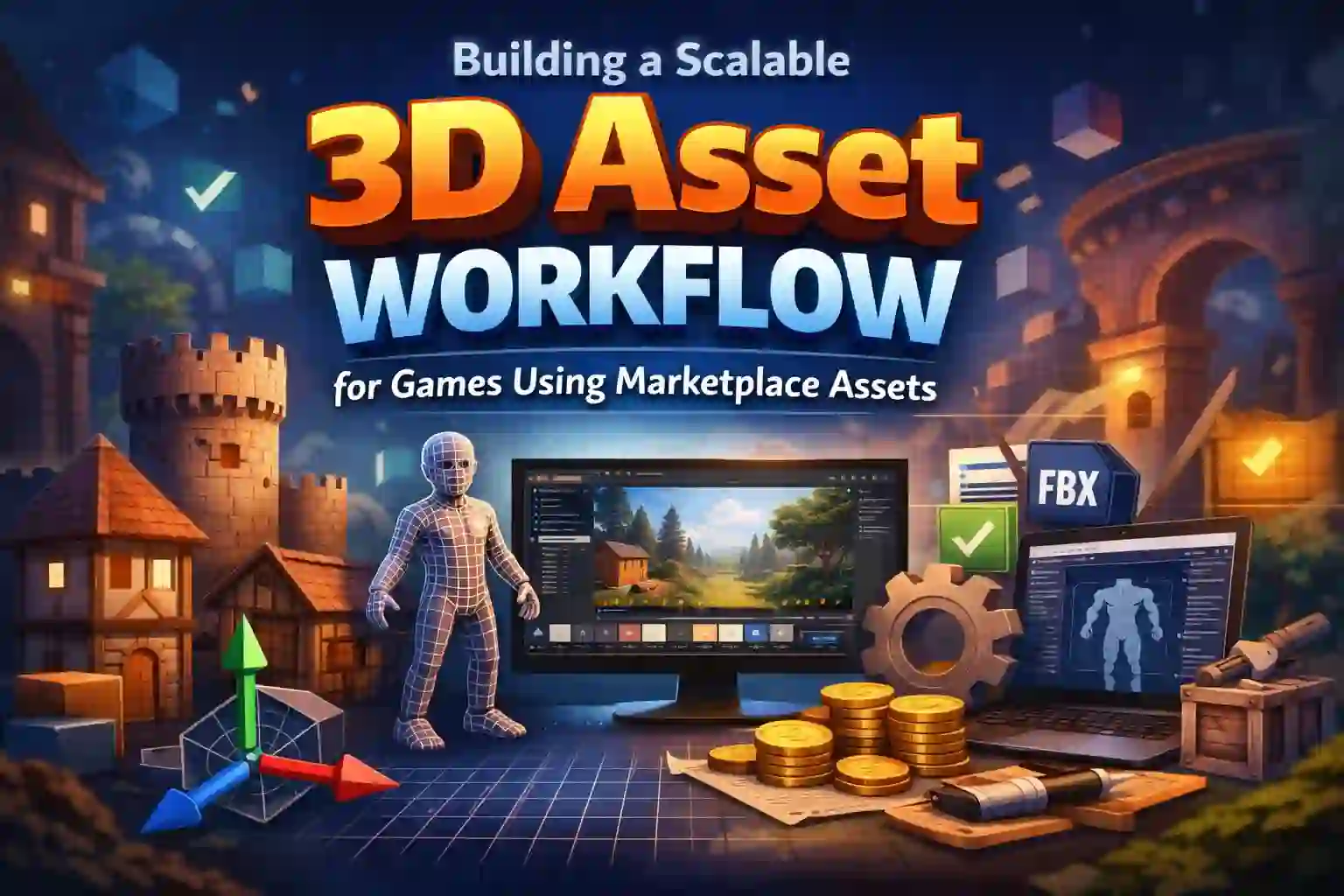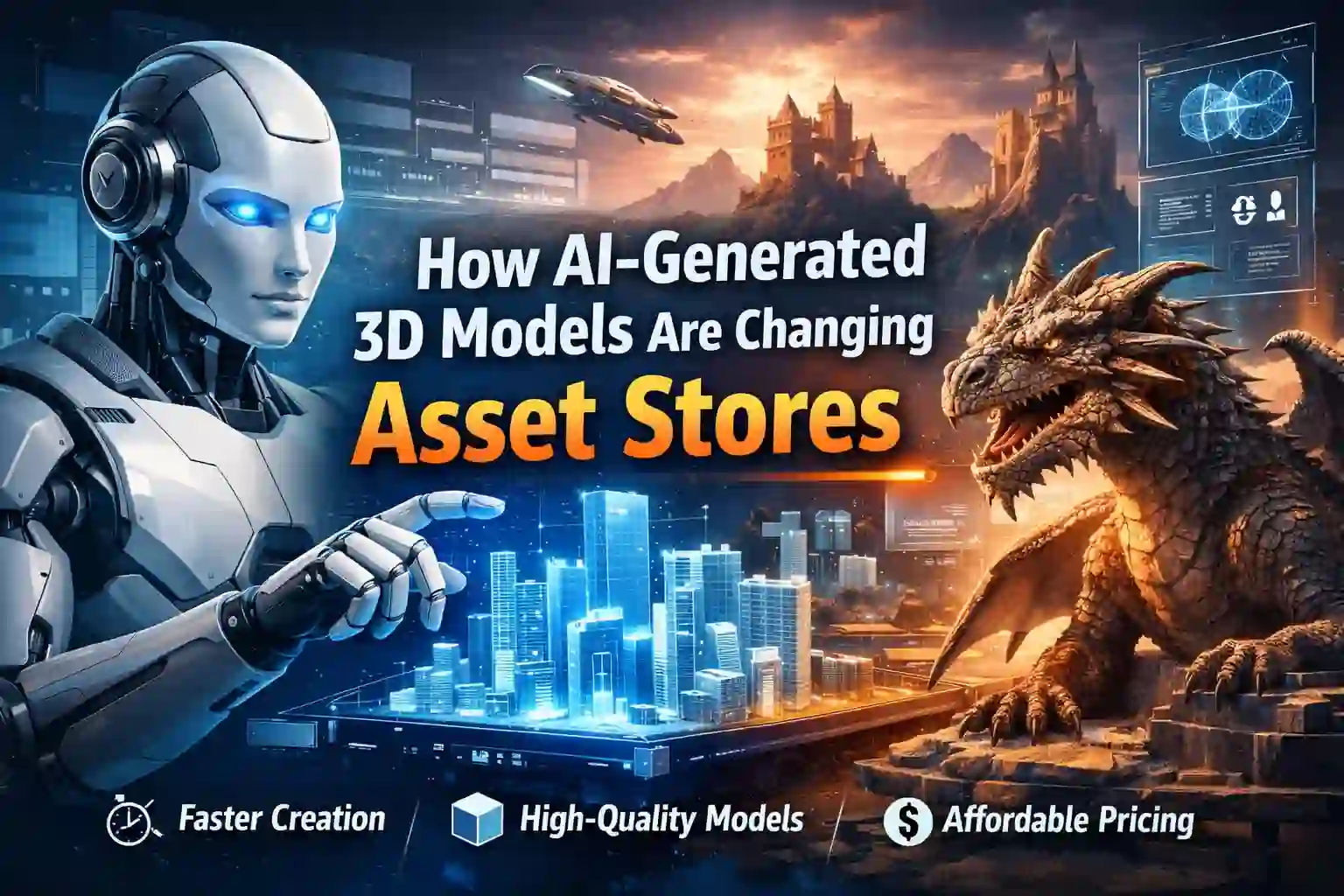Unity Asset Store vs AI Generated 3D Models: Cost Analysis for Indie Developers
by Animatics Asset Store in Blog on September 16, 2025Indie game developers face a constant battle between quality and budget. Every dollar matters when you’re building your dream game with limited resources. The choice between Unity Asset Store purchases and AI generated 3D models can make or break your project’s financial success.
This comprehensive cost analysis reveals the true financial impact of each approach. We’ll examine real pricing data, hidden costs, and long-term expenses that most developers overlook.
The Current State of 3D Asset Pricing
The gaming industry has transformed dramatically in recent years. Traditional 3D modeling workflows now compete with artificial intelligence solutions. Both approaches offer unique advantages and challenges for budget-conscious developers.
Unity Asset Store dominates the premium asset market. Thousands of developers rely on its curated selection for professional-grade content. Meanwhile, AI generated 3D models promise faster creation at potentially lower costs.
Understanding these options requires examining actual numbers rather than marketing claims. Real-world usage patterns reveal surprising cost differences that impact project budgets significantly.
Unity Asset Store: Traditional Pricing Model
Unity Asset Store maintains a minimum price of $4.99 for non-free assets. This baseline represents the most affordable professional content available on the platform. However, quality 3D models typically cost much more.
Typical Asset Store Pricing Ranges
Character models range from $15 to $150 depending on complexity and animation sets. Environment packs cost between $25 and $200 for complete scenes. Vehicle models average $20 to $80 per asset.
Premium publishers like Synty Studios charge higher rates for polished content. Their comprehensive packs often reach $199.99 for complete asset collections. These packages include multiple models, textures, and prefabs.
Budget-friendly options exist but require careful evaluation. Lower-priced assets may lack proper optimization or documentation. This creates hidden costs through additional development time.
Volume Discounts and Sales
Unity Asset Store frequently runs promotional sales. Discounts of 50-70% occur during major events like Unity conference periods. Strategic purchasing during these windows significantly reduces costs.
Bulk purchasing doesn’t offer traditional volume discounts. Each asset requires individual purchase at listed prices. This structure favors developers needing specific items over those building large inventories.
AI Generated 3D Models: Subscription-Based Costs
AI platforms operate on credit-based or subscription models. Most services start at $14 per month for basic plans. These recurring costs accumulate quickly for active developers.
Popular AI Platform Pricing
Meshy charges $20 monthly for 1,000 credits with individual creator plans. Each 3D model generation typically consumes 25-50 credits. This translates to 20-40 models per month at full subscription cost.
Alternative platforms offer Pro plans at $16 monthly for 1000 credits. Some provide unlimited generation tiers at $96 monthly. These premium options suit high-volume production workflows.
Generation costs vary by complexity, with standard models requiring 25 credits per creation. Additional features like AI texturing often come free with base generation costs.
Hidden Costs in AI Generation
Quality control represents a major hidden expense. AI generated 3D models frequently require manual cleanup and optimization. This post-processing adds significant development time.
Multiple generation attempts often prove necessary. Achieving desired results may require 3-5 iterations per model. These additional generations quickly exhaust monthly credit allowances.
File compatibility issues create another cost layer. AI models may need conversion or fixing before Unity import. These technical challenges demand additional tools or developer expertise.
Cost Comparison: Real Project Scenarios
Let’s examine three common indie game development scenarios. Each represents typical asset requirements for different game types and budgets.
Scenario 1: Small Mobile Game (10 Models)
Unity Asset Store approach costs approximately $150-300 total. This includes basic character models, simple props, and environment pieces. One-time purchase provides permanent access.
AI generated 3D models require 2-3 months of subscription fees. Total cost reaches $30-60 plus generation credits. Quality may vary significantly between attempts.
The Asset Store wins for small projects with specific needs. Curated quality and immediate availability offset higher per-model costs.
Scenario 2: Medium Indie Game (50 Models)
Unity Asset Store costs escalate to $750-1500 for diverse, high-quality assets. This investment provides professional-grade content with proven Unity compatibility.
AI generation becomes more cost-effective at scale. Six months of subscriptions ($84-120) plus credits can produce 50+ models. Quality consistency remains the primary concern.
Time investment favors AI for developers comfortable with iteration and cleanup. Asset Store saves time but demands higher upfront investment.
Scenario 3: Large Indie Project (200+ Models)
Unity Asset Store expenses reach $3000-6000 for comprehensive asset libraries. This significant investment requires careful budget planning and strategic purchasing during sales.
AI platforms become clearly advantageous for high-volume needs. Annual subscriptions with unlimited generation plans cost $1152 yearly. This covers hundreds of model generations.
Large projects benefit from AI’s scalability. Creative control and customization options outweigh individual model quality concerns.
Quality and Production Value Considerations
Cost analysis must include quality factors that impact game success. Poor assets damage player perception regardless of development savings.
Unity Asset Store maintains quality standards through curation processes. Professional artists create optimized models with proper documentation. Technical specifications ensure Unity compatibility.
AI generated 3D models vary dramatically in quality. Current technology excels at certain model types while struggling with others. Organic shapes often surpass hard-surface mechanical models.
Technical Quality Metrics
Polygon optimization represents a crucial quality factor. Professional 3D models typically cost $100-500 for simple assets and $1000-5000 for complex ones. This pricing reflects extensive optimization work.
AI models frequently require manual optimization for game performance. Polygon counts may exceed mobile game requirements. LOD generation often needs manual implementation.
Texture quality differs significantly between approaches. Asset Store models include carefully crafted materials and textures. AI generation may produce adequate textures but lack artistic refinement.
Time Investment Analysis
Development time represents a hidden cost that many developers underestimate. Each approach demands different time investments throughout the production process.
Unity Asset Store assets integrate quickly into projects. Most require minimal setup beyond basic configuration. Documentation guides speed implementation processes.
AI generated 3D models need substantial post-processing time. Cleanup, optimization, and testing add hours per model. This labor cost must factor into total project expenses.
Learning Curve Considerations
Asset Store integration requires basic Unity knowledge. Most developers adapt quickly to new asset workflows. Community support provides troubleshooting resources.
AI generation demands new skill sets around prompt engineering and model refinement. Learning effective generation techniques takes considerable practice time.
Alternative Solutions for Budget-Conscious Developers
Smart developers explore multiple approaches to minimize costs while maintaining quality standards. Combining strategies often produces optimal results.
Free asset repositories provide excellent starting points for prototyping. Open-source models help establish basic game frameworks before investing in premium content.
Community-driven platforms offer middle-ground solutions. Some developers share high-quality assets at reduced costs. These resources bridge gaps between free and premium options.
The Animatics Asset Store represents another valuable resource for developers seeking quality assets without premium pricing. Their curated collection includes optimized models specifically designed for game development workflows. Many assets integrate seamlessly with popular development pipelines.
Hybrid Development Approaches
Successful indie developers often combine multiple asset sources strategically. Critical hero assets justify Asset Store investments. Background props might use AI generation or free alternatives.
Prototype phases benefit from AI generation’s rapid iteration capabilities. Production phases favor Asset Store quality for player-facing content. This phased approach optimizes both cost and quality.
Long-Term Cost Projections
Multi-year development cycles require careful cost planning. Subscription-based AI services create ongoing expenses that compound over time.
Unity Asset Store purchases provide permanent licenses for continued use. This one-time investment model suits longer development timelines better than recurring subscriptions.
Scaling Considerations
Growing development teams change cost dynamics significantly. Asset Store licenses often cover entire development teams. AI subscriptions typically require per-user pricing.
Multiple concurrent projects favor permanent asset ownership. Subscription models become expensive when supporting numerous simultaneous developments.
Making the Right Choice for Your Project
No single approach suits every indie developer’s needs. Project scope, budget constraints, and quality requirements determine optimal strategies.
Small teams with limited budgets benefit from strategic Asset Store purchases during sales periods. Focus spending on hero assets that define game visual identity.
Developers comfortable with technical workflows may prefer AI generation for background content. This approach demands higher technical expertise but offers greater creative control.
Recommendations by Development Stage
Early prototyping phases favor rapid iteration over perfect quality. AI generated 3D models excel in concept exploration and gameplay testing. Costs remain minimal during experimental phases.
Production development requires reliable, optimized assets. Unity Asset Store provides proven quality with guaranteed compatibility. Investment security justifies higher costs during critical development phases.
Post-launch content updates benefit from AI generation’s flexibility. Rapid content creation supports ongoing game updates without major asset investments.
Financial Planning Strategies
Successful indie developers plan asset budgets as carefully as other development expenses. Set aside 10-15% of total project budget for 3D content acquisition.
Track actual usage patterns rather than theoretical needs. Many developers over-purchase assets that remain unused. Focus spending on confirmed requirements.
Consider seasonal sales cycles when planning purchases. Unity Asset Store’s major sales can reduce costs by 50% or more. Time non-critical purchases accordingly.
Conclusion: The Verdict for Indie Developers
Both Unity Asset Store and AI generated 3D models serve different developer needs effectively. The choice depends on specific project requirements rather than universal superiority.
Small projects with defined asset needs favor Unity Asset Store’s quality and reliability. The higher per-asset cost pays off through guaranteed compatibility and professional polish.
Large projects requiring extensive asset libraries benefit from AI generation’s scalability. Creative control and customization options justify the additional technical overhead.
Most successful indie developers adopt hybrid approaches. Strategic combinations of premium assets, AI generation, and free resources optimize both cost and quality outcomes.
The key lies in understanding your project’s specific needs and constraints. Analyze your team’s technical capabilities, budget limitations, and quality requirements carefully. This analysis guides informed decisions that support long-term project success.
Remember that asset costs represent just one component of successful game development. Balance these expenses against other critical needs like marketing, platform fees, and ongoing development costs. Smart financial planning ensures your indie game reaches its full potential within budget constraints.






